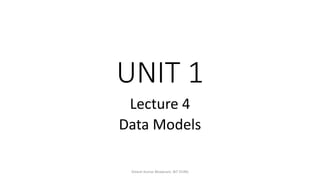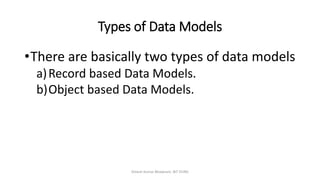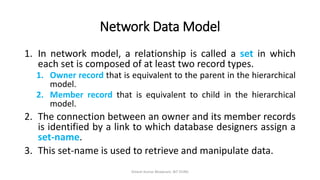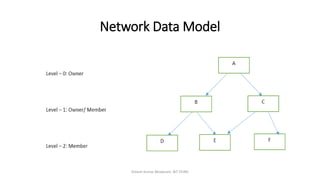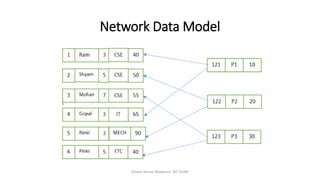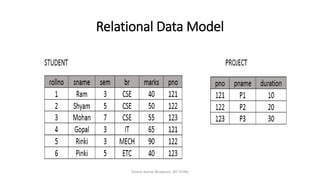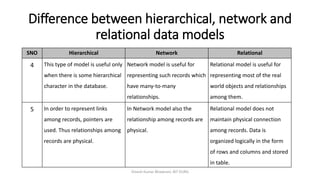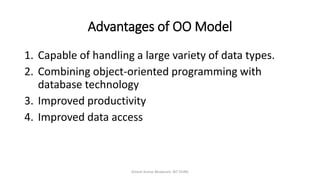The document discusses data models, defining them as tools for describing data, data relationships, semantics, and constraints. It outlines two main types of data models: record-based (including hierarchical, network, and relational models) and object-based (including entity-relationship and object-oriented models), detailing their structures, advantages, and disadvantages. Additionally, comparisons among these models illustrate their unique characteristics and use cases.
